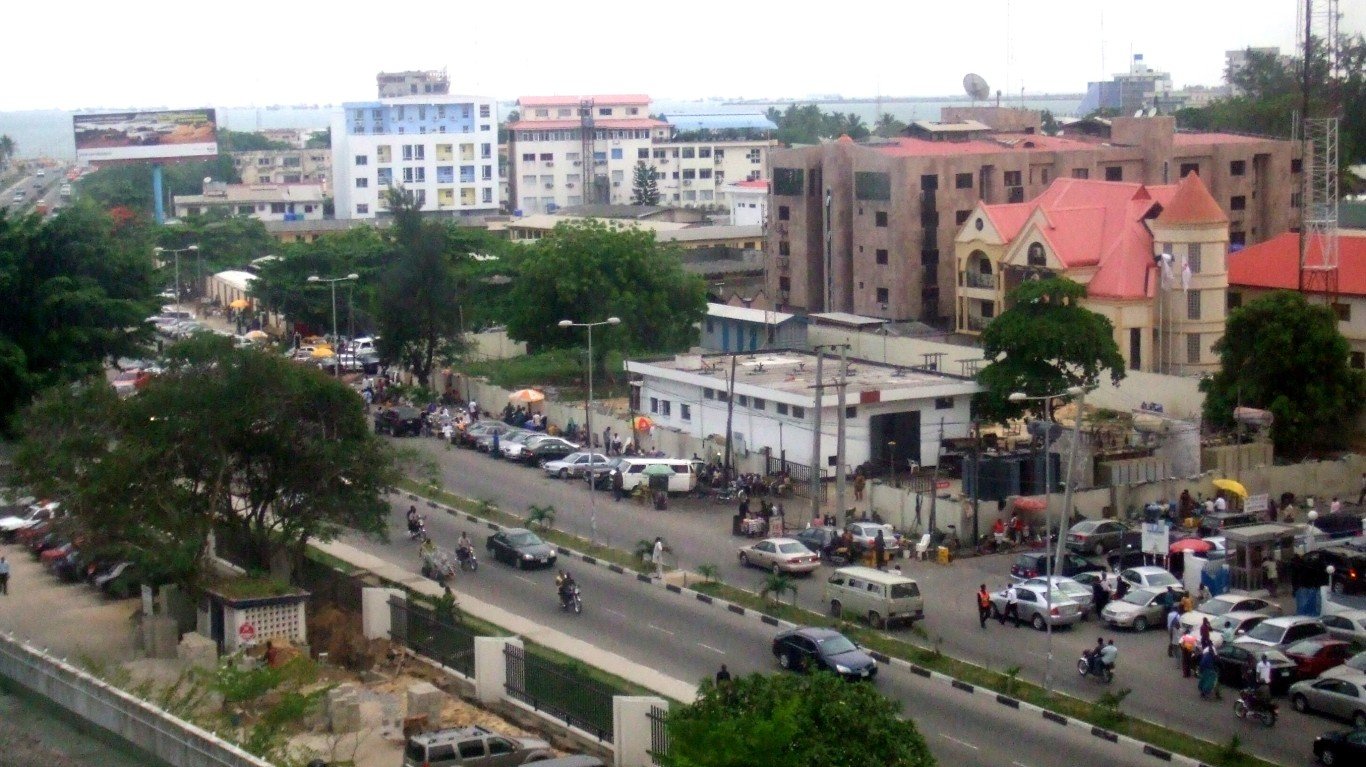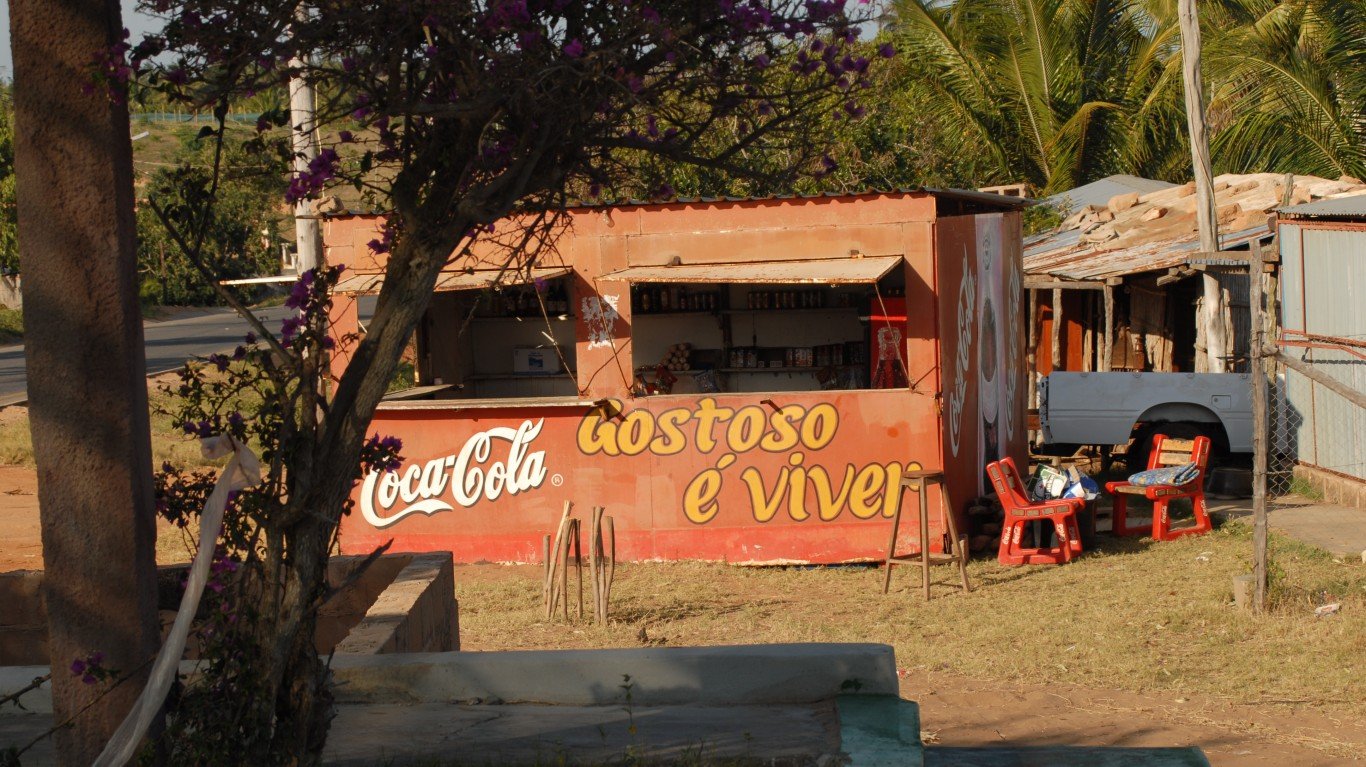7. Niger
> GNI per capita, 2021: $1,330
> GDP, 2021: $14.92 billion (#85 lowest of 214 countries)
> Avg. life expectancy at birth, 2021: 61.6 years (#25 lowest of 194 countries)
> Population growth, 2023 est.: 3.7% (#3 highest of 237 countries)
> Population, 2021: 25,252,722
The Sahara Desert covers much of Niger, situated in West Africa. The landlocked country confronts numerous development challenges, including food insecurity, high fertility rates, which contributes to the world’s third highest population growth, and low access to health care and education systems. More than 41% of the population were living in extreme poverty in 2021. Other challenges include desertification and vulnerability to climate change.
6. Mozambique
> GNI per capita, 2021: $1,320
> GDP, 2021: $15.78 billion (#87 lowest of 214 countries)
> Avg. life expectancy at birth, 2021: 59.3 years (#15 lowest of 194 countries)
> Population growth, 2023 est.: 2.6% (#18 highest of 237 countries)
> Population, 2021: 32,077,072
Despite its rich natural resources, including natural gas reserves, Mozambique faces significant development challenges, including poverty, limited access to quality health care and education, and vulnerability to natural disasters such as cyclones and floods. The country, located on the southeast coast of Africa, has one of the lowest life expectancy at birth, at 59.3 years.
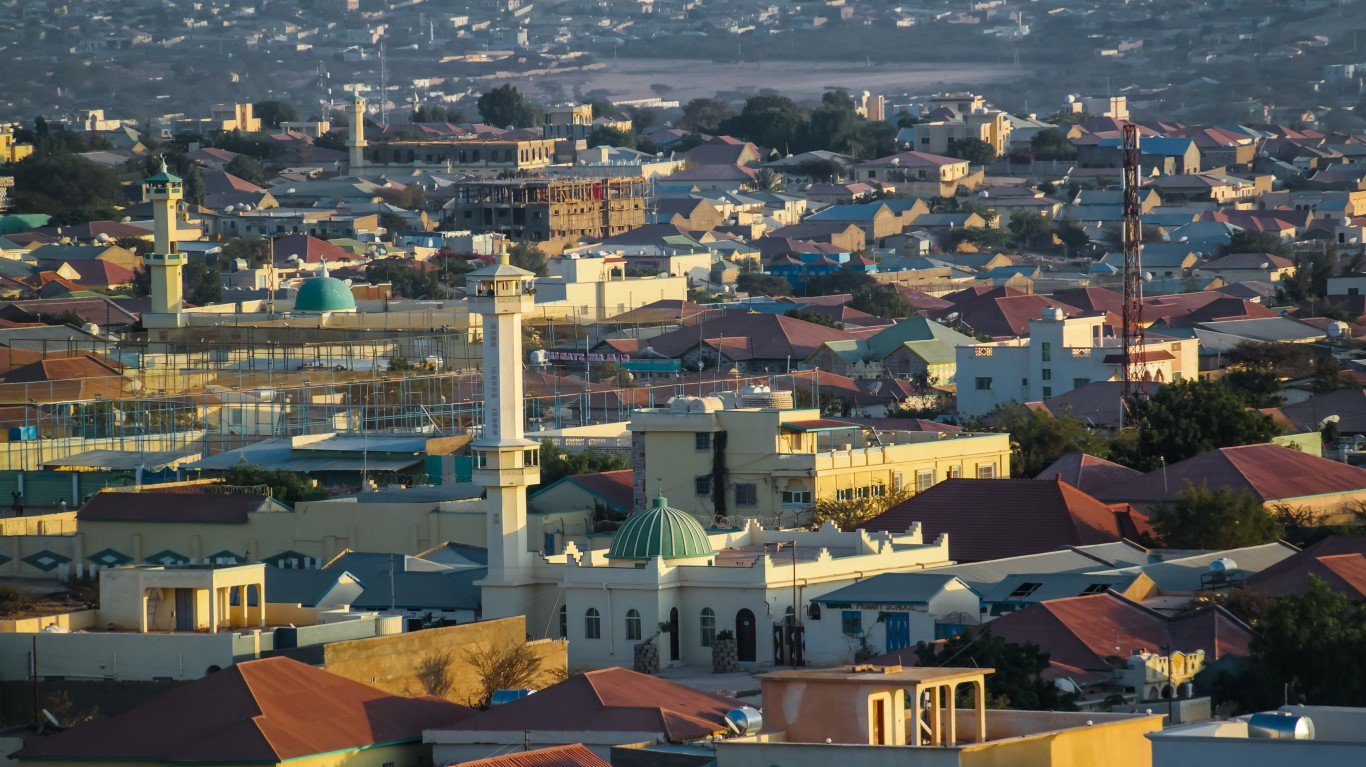
5. Somalia
> GNI per capita, 2021: $1,240
> GDP, 2021: $7.63 billion (#57 lowest of 214 countries)
> Avg. life expectancy at birth, 2021: 55.3 years (#6 lowest of 194 countries)
> Population growth, 2023 est.: 2.5% (#22 highest of 237 countries)
> Population, 2021: 17,065,581
Somalia, situated in the Horn of Africa, has faced prolonged conflict and instability, as well as recurring droughts, making it one of the most challenging environments for economic development. The country struggles with weak governance, limited access to basic services, and widespread poverty. With its strategic location along the Gulf of Aden, Somalia has been known for piracy, though measures have reduced incidents considerably. Somalia’s economy relies heavily on remittances.
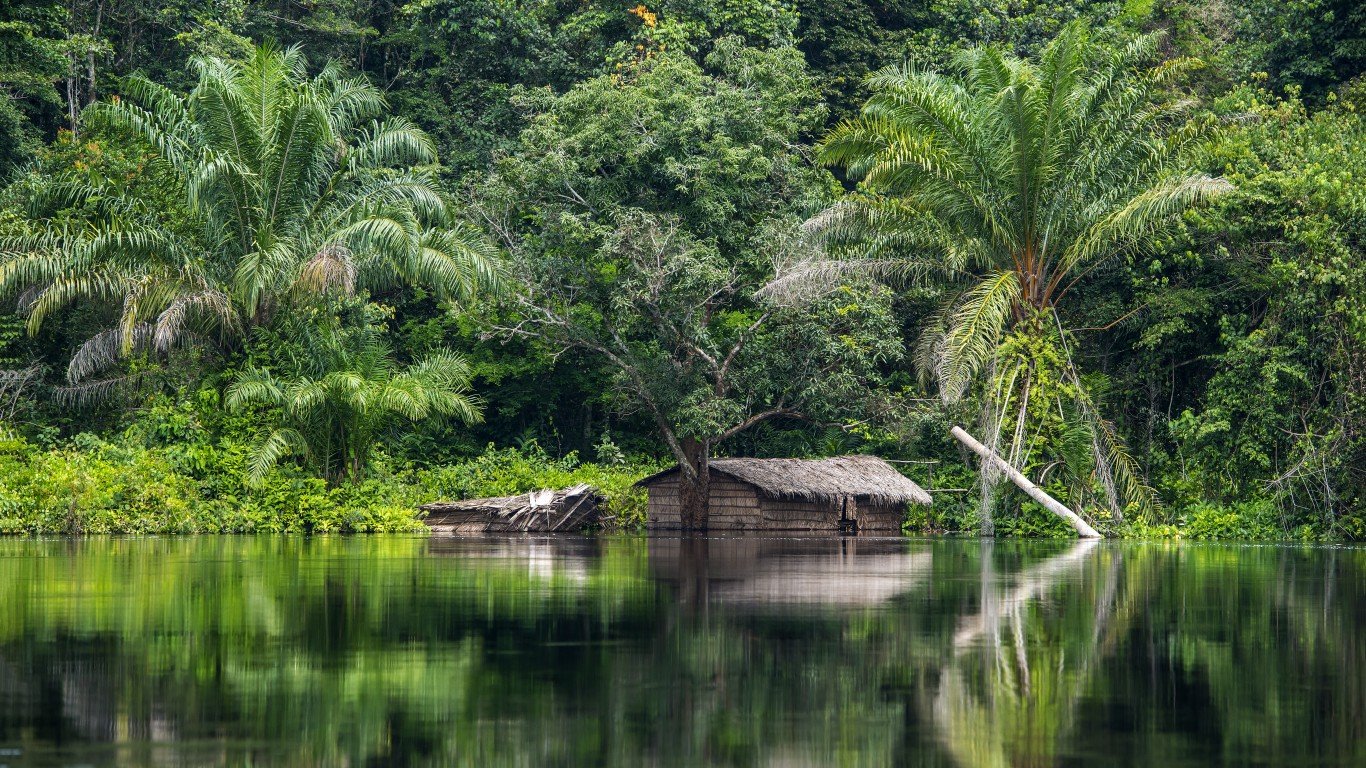
4. Congo, Dem. Rep.
> GNI per capita, 2021: $1,110
> GDP, 2021: $55.35 billion (#128 lowest of 214 countries)
> Avg. life expectancy at birth, 2021: 59.2 years (#11 lowest of 194 countries)
> Population growth, 2023 est.: 3.1% (#9 highest of 237 countries)
> Population, 2021: 95,894,118
The Democratic Republic of Congo, which is about the size of Western Europe, is the largest country in sub-Saharan Africa. The DRC grapples with prolonged ongoing conflicts, political instability, and widespread poverty. The country’s wealth of natural resources, including cobalt, copper, and diamonds, have been marred by corruption and mismanagement, hindering economic development and exacerbating poverty. The country is home to the Congo Rainforest, the second-largest tropical rainforest globally.
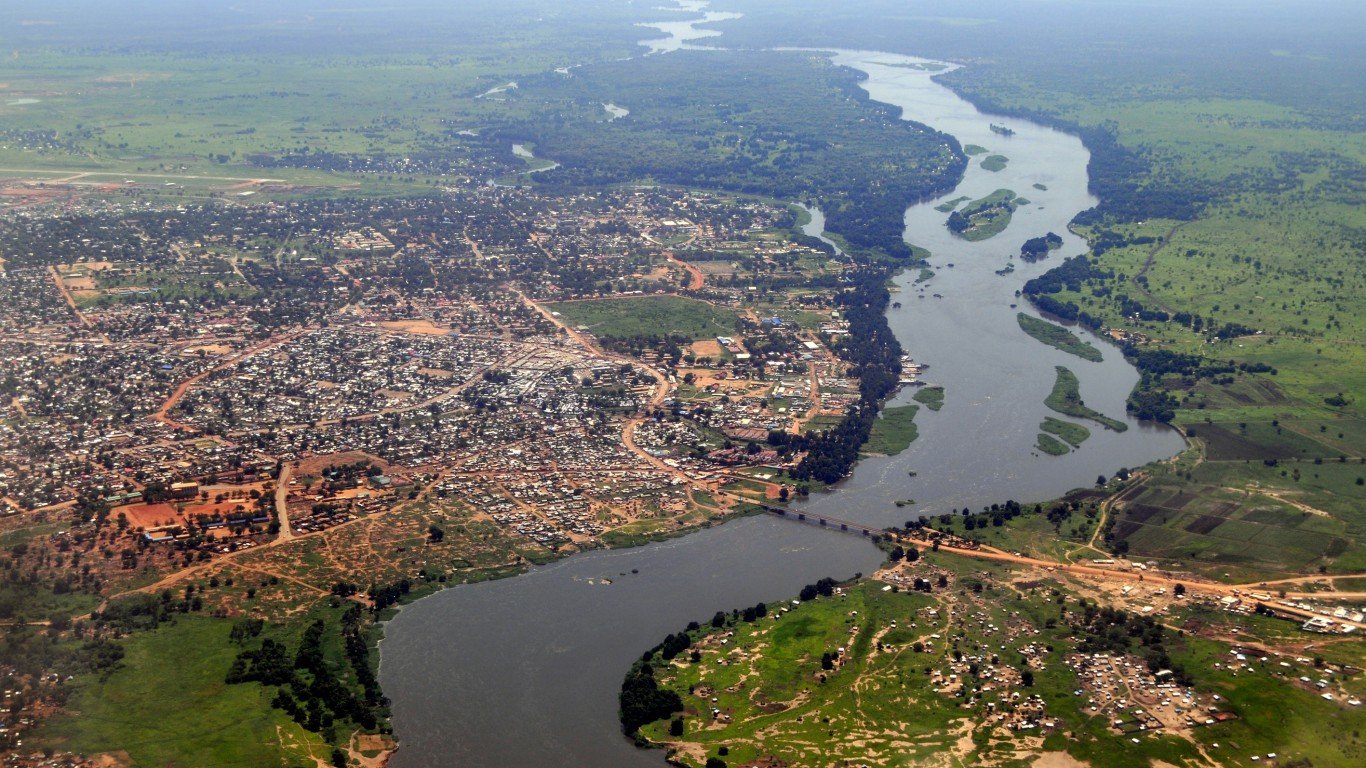
3. South Sudan
> GNI per capita, 2015: $1,040
> GDP, 2015: $12.00 billion (#72 lowest of 214 countries)
> Avg. life expectancy at birth, 2021: 55.0 years (#5 lowest of 194 countries)
> Population growth, 2023 est.: 4.8% (#2 highest of 237 countries)
> Population, 2021: 10,748,272
The world’s youngest country, South Sudan gained independence in 2011. The East-Central Africa nation ranks third poorest, with a GNI per capita of $1,040 (2015 data) and a life expectancy of just 55 years, the world’s fifth lowest. It faces ongoing political turmoil, internal conflict, and humanitarian crises, contributing to high levels of poverty, food insecurity, and displacement. The country’s economy heavily relies on oil production, but conflicts and political instability have disrupted its development.
